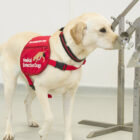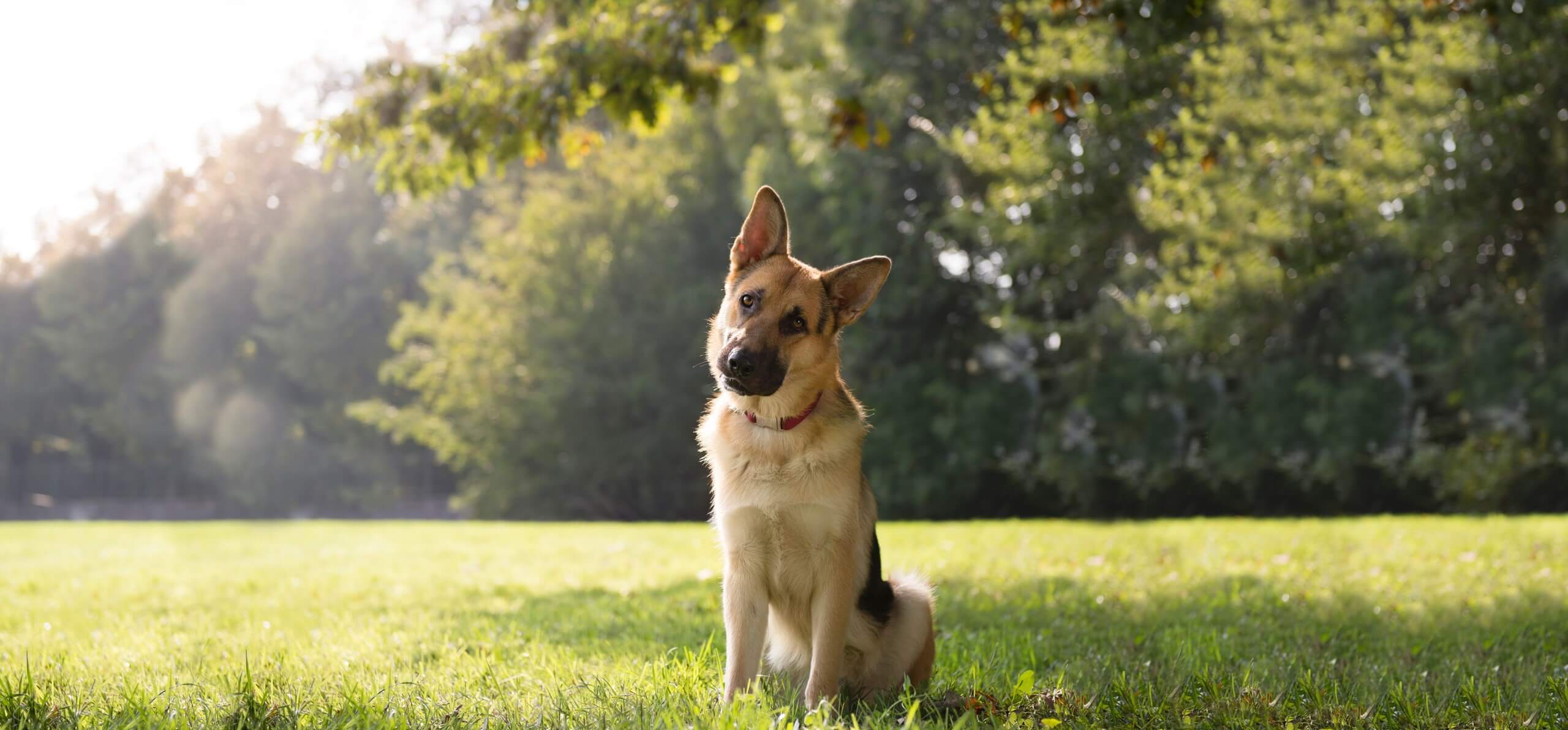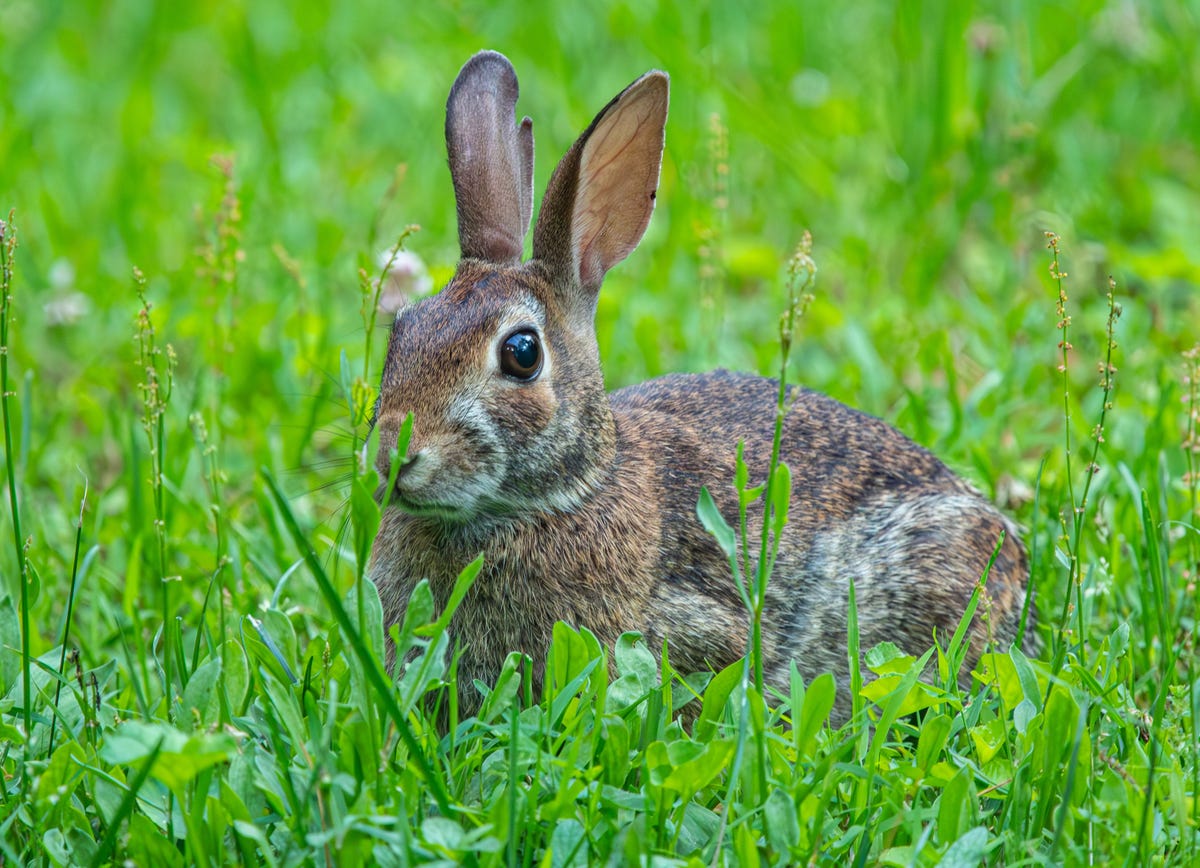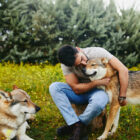Why does my dog sniff butts?
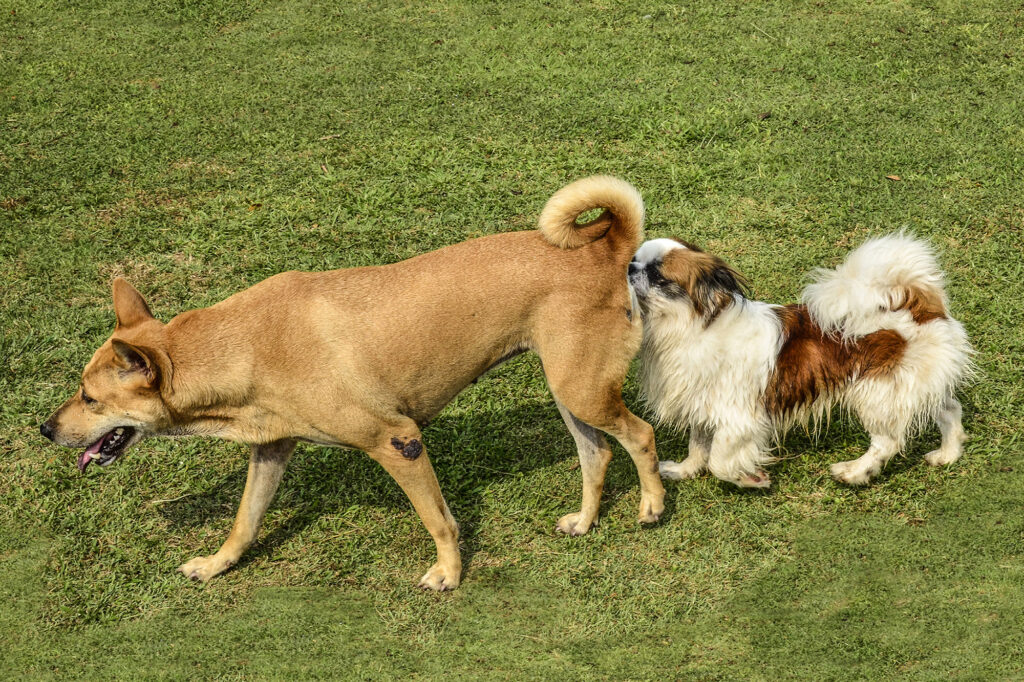
Dogs have a curious habit that can seem strange to us humans: they sniff each other’s butts. While this behavior may appear odd or even humorous to observers, there’s a scientific explanation behind it: this common but intriguing behavior serves as a crucial form of communication among dogs.
Canine Communication Through Scent
Dogs navigate their world through a symphony of scents, relying on their remarkable olfactory system to gather information about their environment and fellow canines. Unlike humans, whose sense of smell pales in comparison, dogs possess an olfactory cortex that is proportionally much larger, housing an intricate network of scent receptors that capture the essence of their surroundings in exquisite detail.
Within a dog’s nasal cavity lies a labyrinth of turbinates, thin bony structures lined with millions of olfactory receptor cells. These specialized cells detect airborne molecules and convert them into electrical signals that are relayed to the brain for interpretation. This sophisticated system allows dogs to detect scents with a sensitivity estimated to be tens of thousands to even a million times greater than humans.
In addition to their acute sense of smell, dogs possess a unique organ known as the vomeronasal organ, or Jacobson’s organ, located within the nasal cavity. This organ is responsible for detecting pheromones, chemical signals emitted by other animals, including fellow dogs. Pheromones convey a wealth of information about an individual’s identity, reproductive status, and emotional state, serving as the cornerstone of canine communication.
A Dog’s Butt Tells a Lot
When dogs sniff each other’s behinds, they’re exchanging valuable social information. Dogs can detect a multitude of information through the scent glands located in their anal area.
One of the primary purposes of butt sniffing in dogs is to gather information about the identity and health status of their counterparts. Each dog produces a distinct scent profile based on factors such as genetics, diet, and health status. By sniffing another dog’s butt, a dog can ascertain important details about their identity, such as their age, sex, and individual scent signature.
Another crucial aspect of canine communication through scent is the assessment of reproductive status. Female dogs release pheromones that fluctuate depending on their reproductive cycle, particularly during estrus or “heat.” Male dogs are highly attuned to these chemical cues and may sniff a female’s rear end to determine if she is receptive to mating. By detecting the presence of specific pheromones, male dogs can adjust their behavior and interactions with females accordingly, facilitating successful mating opportunities.
Canine Hierarchy and Bonding
Within the intricate dynamics of canine social groups, establishing hierarchy is paramount. Butt sniffing plays a significant role in this process, serving as a means for dogs to assert dominance or submit to higher-ranking individuals. When dogs encounter each other, especially in group settings, they engage in a ritualistic exchange of scents through butt sniffing, which helps clarify their positions within the social structure.
During butt sniffing interactions, dominant dogs often initiate the exchange by approaching subordinates and sniffing their rear ends. This assertive behavior allows dominant individuals to assert their authority and reinforce their position at the top of the social hierarchy. Subordinate dogs, in turn, typically exhibit deference by lowering their bodies and allowing the dominant dog to sniff them. This exchange of scents helps establish and maintain clear boundaries within the group.
While butt sniffing is often associated with dominance and submission, it also serves as a mechanism for bonding and building trust among dogs. Through the exchange of scents, dogs create a shared olfactory profile that is unique to their social group. This shared scent helps foster a sense of belonging and cohesion within the group, strengthening the bonds between individual members. Regular butt sniffing interactions contribute to the development of a harmonious social structure and promote cooperation among group members.
Manner of Greeting and Recognition
Despite the intimate nature of butt sniffing, dogs adhere to a set of unwritten rules governing this form of communication. Dogs approach one another with caution, often engaging in subtle body language cues to signal their intentions before initiating a sniff. This respectful approach helps to mitigate potential conflicts and ensures that interactions remain harmonious. Additionally, dogs understand the concept of personal space and will typically refrain from excessive or intrusive sniffing, demonstrating a sense of canine etiquette and respect for boundaries.
Cultural Differences and Individual Preferences
It’s important to acknowledge that not all dogs exhibit the same level of enthusiasm for sniffing. Some may engage in prolonged sniffing interactions, while others may be more reserved. This behavior can vary based on breed, age, individual personality, and previous experiences.
The act of a dog sniffing another’s behind is a natural, complex, and crucial aspect of canine communication. It plays a significant role in social interaction, providing dogs with essential information about their surroundings, helping them establish hierarchies, and contributing to their social bonding.


